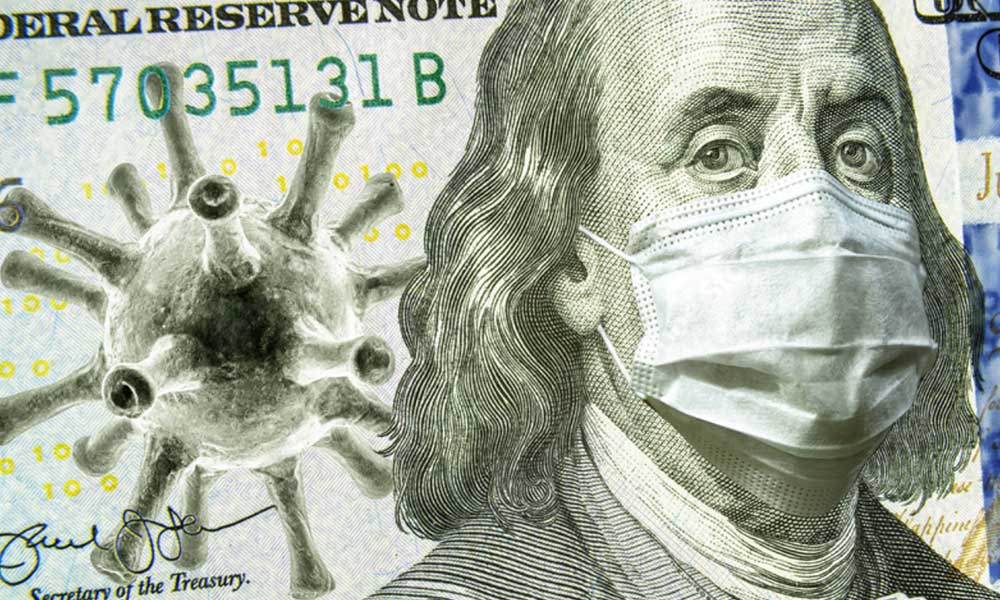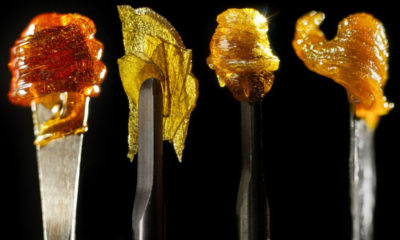Two Years Later: Cannabis & COVID
The continuing impact of the global COVID-19 pandemic on the cannabis industry after the world changed forever.
For the hardy citizens of Maine, the long lonely lockdown of the COVID-19 pandemic meant the long-anticipated, long-delayed arrival of legal cannabis.
Almost four years to the date after voters in that state and three others joined the legalization wave on the same night Donald Trump was elected, the state’s first adult-use cannabis dispensaries finally opened for business in late 2020. Here, at last, was proof of concept for marijuana legalization, a policy choice favored by more than two-thirds of Americans, according to the most recent Gallup and Pew Research polling. Here, at last, was the arrival of the country’s fledgling cannabis industry.
A baby juggernaut still in its diapers—with $25 billion worth of legal sales in the US in 2021 and $10.4 billion in tax revenue since the adult-use legalization era began almost a decade ago—the cannabis industry is worth tens of billions of dollars and now could be worth as much as $100 billion by 2030, according to some of the rosy estimates making headlines in the cannabis and business press. Not even COVID-19 could stop cannabis, according to analysts; in fact, there was a COVID sales bump.
For me, the jaded middle-aged millennial who spent most of two decades in California, COVID meant legal weed stores within a short drive of my parents’ house, a vision my high-school self would’ve dismissed as a vision generated by a bad experience with the salvia picked up from the less than reputable shop. So, visiting Maine last summer, fully vaccinated and ready to buy some weed, I pulled into the gravel parking lot of what looked like a double-wide mobile home—plopped down in the middle of a hastily cleared forest—brimming with a mix of pride, excitement and curiosity.
Inside, all the predictable staples were available on the modest, manageable menu: a half-dozen flower strains, a couple choices of edibles—though, like most places, no nationally recognizable brands; everything aside from an edible or two was cultivated and produced by the company that owned the place.
I picked up some old reliables: an eighth of Chem Dog, a gram of Gorilla Glue. I swapped some friendly small talk with the eager budtender, whose pleasantness led me to overlook her blank stare when I asked about the parentage of one strain I’d never heard of, followed by the disappointing suggestion that I just buy the highest-THC strain. We didn’t even discuss terpenes. “It’s OK; they’re new,” I said to myself, choosing to forget the fact that medical cannabis had been in Maine for years.

What I couldn’t forgive nor forget was what happened when I returned home.
The flower smelled nice enough when I shook it out of the jar. Good nose, decent trim. But in the grinder, disaster struck—or revealed itself. I had to twist harder than necessary. Much harder. What came out wasn’t fine rollable particles that burned easily and smoothly, but big torn-off chunks that smoked harsh and evil, producing coughs that sounded like I’d just received a positive COVID test. This weed was wet. This weed was barely cured at all! I had just paid $50 an eighth (plus tax) for pot unfit for consumption. Outraged, I fished around in my bag for the stash I’d brought from the (illegal) speakeasy I patronize back home in New York City. As for legalization, I left the new weed open overnight to try and imperfectly finish the hack cure job I’d paid for.
In one analysis, who cares? My $50 (plus tax) was just a tiny drop in a multi-billion-dollar ocean. Remember the numbers? They don’t lie. In 2020, the first year of life with coronavirus in the US, legal cannabis sales topped $25 billion, up from $17.5 billion the year before, according to Forbes. And with states such as New York and New Jersey coming online—with the revenue tsunami of federal legalization lurking over the horizon—sales of legal weed should top a ludicrous-sounding $75 billion by the end of the decade, as investment bank Cowen forecasts. With numbers like these, what’s the problem with some jerk blowing less than the cost of a full tank of gas on some shitty store-bought weed?
The problem is that those numbers may indeed lie. After two years of COVID-19, the US cannabis industry is in a very strange place, according to interviews with cannabis-industry investors, entrepreneurs, analysts and advocates from across the country.
All those commas and zeros on pitch decks and market forecasts aren’t leading to commas and zeros in the bank. The problem is that not enough “jerks” are doing this: buying expensive, overtaxed weed from dispensaries that many connoisseurs agree just isn’t very good. And too many of them, like myself, marched straight out of the hastily constructed store back to the familiar sandwich bags on the “traditional market,” where we found better cannabis for less money, an act repeated across the country that’s jeopardizing the legalization experiment and the cannabis industry as we know it.
Though overall numbers continue to climb, most individual cultivators and retailers say they’re struggling and need immediate relief by way of reduced taxes and regulatory burdens in order to stay in business—in order to stand a chance at competing with the still-booming illicit market, which is anywhere from three to five times as large, according to Forbes and other estimates.

“We saw an average of 1500 people per day before the pandemic hit,” said Marc Matulich, the founder and CEO of Airfield Supply Company, a vertically integrated dispensary that opened doors in San Jose, CA in 2010. With cannabis declared an essential business, sales recovered from their nadir in March and April 2020. However, despite an increase in the overall number of unique buyers, Airfield only averaged 1000 to 1300 customers per day in 2021.
Their recovery was more people, buying less weed. Meanwhile, in the cannabis business press, all the headlines were about a COVID bump in sales fueling the billions in revenue, a version of reality Airfield simply didn’t recognize. “I was reading at the time that the industry was booming, and we weren’t feeling that,” Matulich said.
“Even before the virus, the industry was struggling somewhat because of the over taxation and the over regulation,” said Chaney Turner, a business owner who chairs the Cannabis Regulatory Commission in Oakland, CA. “We weren’t necessarily winning. As someone who used to operate on the unregulated market…sometimes, I’d rather just go back to selling unlicensed, illegal weed,” she said, voicing frustrations echoed throughout the industry.
Even “Big Weed,” the country’s crop of publicly traded companies with billion-dollar valuations—the #msogang for multi-state operators—aren’t printing money, and as a result, aren’t tearing up the stock market or anyone’s Robinhood app.
For example, Chicago-based Green Thumb Industries sold $650 million worth of weed at 65 US stores last year. The company’s most recent earnings reports show that they only pulled in $52 million in revenue over the first nine months of 2021, and they’re still carrying a $92 million deficit.
According to their many critics, as well as their own annual investor reports, the MSOs are doing OK because they operate in markets where state regulations limit the number of entrants into the market. With artificial limits on competition, poor product, precisely like the uncured weed I encountered in Maine, will sell—or at least until the buyer finds a better option on the illicit market.
Meanwhile, key promises of marijuana legalization remain unfulfilled, by both the government and the cannabis industry. Relentlessly pitched as a social-justice corrective that would enrich communities of color who paid the steepest prices of the drug war in arrest and incarceration rates and community impoverishment, legalization instead has delivered the spoils to the usual suspects: already wealthy investors who are mostly white, older and male. You’ve heard this before, but it bears repeating.

“For the industry in general, the pandemic has been a rollercoaster, but overall, large cannabis businesses are doing better,” said Amber Littlejohn, the executive director of the Minority Cannabis Business Association.
“However, like other US industries, minority-owned businesses haven’t fared as well,” she said. “Many didn’t have the resources to adjust to doing business in the time of COVID with increased staffing and operational costs, as well as adapting to serving the customer in a ‘no-contact’ business climate, all without access to small business relief or the MSO deep pockets.”
Despite how much the cannabis industry has progressed in the past few years, some of the same old bugaboos continue to stalk companies’ balance sheets and the outlook of the industry as a whole. Chief among them is federal prohibition.
Cannabis remains a Schedule I controlled substance. This means cannabis businesses are still hampered by the tax code—section 280E, which prohibits merchants of banned substances from making certain deductions on the federal taxes—and by banking regulations that shut most businesses out from basic financial services and charge a premium on those weed businesses that do bank. Federal prohibition also prevented cannabis businesses from taking advantage of needed COVID relief programs, such as the federal Payroll Protection Program (PPP).
“I think most of our problems continue to boil down to the need for federal action,” said Aaron Smith, the executive director of the National Cannabis Industry Association. “State reforms are slowly moving forward, but you still have a scenario where this industry is unable to operate like a normal business.”
“While we see in the press that everything is rosy and sales are up, on the other side of the equation, costs are dramatically up,” he says. “The number one thing to make life better for this industry would be to resolve these federal and state conflicts.”
But while the obstructionist nature of the US Senate and tepid interest from the Biden Administration mean the familiar stalemate at the federal and state level, regulators and lawmakers continue to view the cannabis industry as a handy ATM tied to a bank account that can never be exhausted. Yet, that too is a misconception upon closer examination.
California, for example, was on track to rake in more than $1.2 billion in total cannabis tax revenue in 2021, according to California Department of Tax and Fee Administration data. That’s money the state doesn’t need: On January 10, Governor Gavin Newsom announced a budget surplus of more than $45 billion. Yet, despite pleas from the state’s biggest cannabis businesses (at least the ones that aren’t MSOs) to cut taxes as per state law, cannabis taxes increased yet again in 2022.

“We have a local tax of 10 percent, we have a 15 percent excise tax and then we have regular sales tax on top of that plus the cultivation tax,” said Matulich of Airfield Supply. “That’s 38 percent tax just at the retail counter, plus all the taxes on the back end nobody knows about, plus [$300,000 worth] of regulatory fees. All of those things present a significant challenge to business.”
In the long view, these complaints themselves represent remarkable progress. Every merchant in America grouses about taxes and government overreach. Cannabis is normalizing. But not every merchant in America works in an industry that attracted Drug Enforcement Administration raids just a few years ago. Cannabis isn’t yet normal, and what will be “normal” for the weed industry a decade or a generation from now may take final form over the next few years. And that form will hinge on choices made today.
Ryan Lepore sits on the executive board of New York City NORML and lobbied the state legislature to pass the New York State Marijuana Revenue and Taxation Act, considered the current gold standard for legalization laws. On a recent trip to Palm Springs, CA, he visited a few dispensaries, where he marveled at paying $90 in taxes on a half-ounce purchase. A few dispensaries had “consumption lounges,” sitting and smoking areas so strictly regulated that they remain near empty (partially a result of COVID).
“I think all of this stuff is still not meeting the culture of the consumer where it needs to be,” he said. “That’s the type of stuff that kills the market.”
Luckily for Lepore, he’d brought some of his own illegal smoke from New York, which he shared with a stranger while standing and smoking outside of his hotel, same as in the pre-legalization days.
This story was originally published in the print edition of Cannabis Now.























